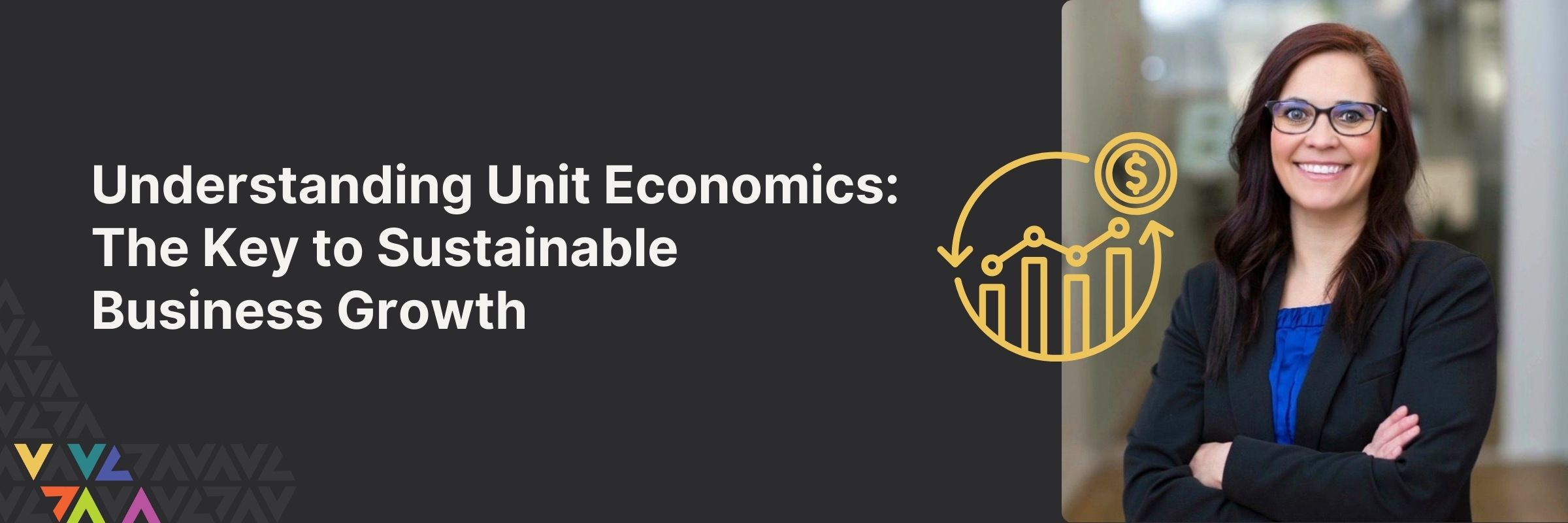
Unit economics is a fundamental concept that forms the basis of any successful business model. It is a crucial metric that every entrepreneur and business leader should grasp to ensure the long-term viability and profitability of the business. In this article, we will explore the concept of unit economics, why they matter, and how they can impact the growth and sustainability of a business plus tips on how to improve unit economics.
What is Unit Economics?
Unit economics refers to the direct revenues and costs associated with a business using an applied metric on a per-unit basis. The “unit” in unit economics can vary depending on the nature of the business. For a software company, it might be the cost and revenue associated with each software license sold, while for a consumer goods company, it could be the profit generated from each product sold. In recent years, the increase in e-commerce platforms and subscription-based models has created a new business phenomenon that uses and applies both methods to measure unit economics.
Why Unit Economics Matter:
Understanding unit economics is important for the following reasons:
- Sustainability: Positive unit economics are a sign the business model is sustainable. If the cost of acquiring, selling, and serving customers is consistently lower than the revenue generated, there is a solid foundation for growth.
- Scalability: To successfully scale a business, it is central to have favorable unit economics when acquiring more customers or selling more units. If the costs increase disproportionately to revenue scaling the model can become unsustainable and require more capital than planned.
- Investor Confidence: Investors closely scrutinize unit economics when evaluating startups or businesses seeking funding. A healthy unit economics profile can attract investors, while unfavorable unit economics can create investment challenges and lead to a breakdown.
- Profitability Assessment: Identifying all the costs that impact profit margins and/or the contribution margin is tricky, even for seasoned finance professionals. By analyzing direct and indirect costs on a per-unit basis, businesses can assess whether they are selling their products at a profit or a loss.
- Pricing Strategy: Transparency of the single-unit costs is essential for setting appropriate pricing strategies. It ensures the price covers the direct costs but adequately considers the indirect expenses of creating, producing, or purchasing products. The most critical decision a business leader can make is implementing the maximum pricing strategy from the beginning. Applying an ineffective pricing strategy may negatively impact profits for years. (Gutarra, Lancksweert, & Ghekiere, 2022).
- Cost Control: Monitoring all costs allows a business to identify opportunities for creating initiatives to improve efficiencies and improve profitability. Data analytics is a great tool to identify which costs to reduce by converting raw data into actionable insights such as labor costs and supply chain management drivers (Lele, Kumari, & White, 2023).
Calculating Unit Economics:
There are two methods of calculating unit economics and the deciding factor on which method to use is how the business defines a unit. If a business defines a unit as “one item sold” the contribution margin method is the best method to use. If the business defined a unit as “one customer” then the Lifetime Value (LTV) and Customer Acquisition Cost (CAC) method is the best method to use. Recently there has been an increasing number of businesses using both methods, such as subscription services that sell goods and have recurring customers.
The Contribution Margin Method:
- Price per Unit: The purchase price less any deductions, allowances, or discounts. Best practices are to show both the gross and net price in unit economic calculations. This will allow visibility to the actual selling price and not just look at top-line sales, which can be misleading.
- Cost of Goods Sold (GOGS) per Unit: Total landed costs are the most accurate way to determine the full cost of a product. The building of materials (BOMs) should include raw materials, packaging, and labor (tolling) costs plus any add-on costs such as freight, taxes, and fees. (Dewi, 2021).
- Variable Cost per Unit: Costs related to fulfillment usually include third-party logistics (3PLs) fees or broker fees related to the cost of delivering the products to the customer. Warehouse or storage fees associated with storage under certain circumstances should factor into the unit economics.
- Gross Profit vs Contribution Margin: The difference between gross profit and the contribution margin is the variable costs, which can often exceed the COGS and distort profitability if not accounted for in the model. When considering price strategies variable costs play a key role in protecting margins and profitability.
Unit Economics Formula: Gross Selling Price – Discounts & Allowances – COGS – Variable Costs
The LTV: CAC Method:
- Customer Acquisition Cost (CAC): Represents the expenses incurred to acquire a single customer. This includes marketing, advertising, sales team salaries, and other related costs over a given time.
CAC Formula: Acquisition Costs/New Customers Acquired
- Lifetime Value (LTV): Also known as Customer Lifetime Value (CLV) quantifies the gross profit you can expect to generate from a single customer over the entire relationship with the business. It accounts for repeat purchases, upsells, and referrals. Maximizing LTV ensures that each customer contributes significantly to profitability while providing insights to customer retention.
LTV Formula: Average Purchase Value x Purchase Frequency x Average Customer Lifespan
- LTV: CAC: The LTV to CAC ratio measures the relationship between the lifetime value of a customer and the costs of acquiring the customer. The LTV: CAC ratio is a measure of investment and profitability. Low ratios could signal lower profits, while high ratios could signal under-investment to grow the business.
Unit Economics Formula: LTV/CAC
Tips To improve unit economics, consider the following strategies:
- Reduce COGS and Variable Costs: Optimize supplier contracts to get the best rates, such as scheduling more efficient production schedules, redesigning packing to reduce waste, and reviewing 3PL and freight contracts for the best negotiated rates.
- Reduce CAC: Optimize marketing and sales strategies to acquire customers more cost-effectively. Focus on targeted advertising, referral programs, and improving conversion rates.
- Increase CLV: Provide exceptional customer service to encourage repeat business and loyalty. Offer upsells and cross-sell opportunities to increase the value of each customer over time.
Conclusion:
Unit economics are not static, and they can change over time due to shifts in strategies, customer behavior, or market conditions. Carefully analyzing and optimizing unit economics, the business can lay the foundation for sustainable growth and attract the interest of investors. Remember that the specifics of unit economics can vary depending on the industry and business model, so it is essential to continually monitor and adapt strategies to maintain a healthy and financially stable business.
References:
Dewi, P. E. D. M., Devi, S., & Masdiantini, P. R. (2021, November). Analysis of Cost of Sold and Production Costs on Company Profit. In 6th International Conference on Tourism, Economics, Accounting, Management, and Social Science (TEAMS 2021) (pp. 388-391). Atlantis Press.
Gutarra, C., Lancksweert, C., & Ghekiere, C. (2022). Transforming to a SAAS business model: Development of a product packaging and pricing strategy.
Lele, V. P., Kumari, S., & White, G. (2023). Streamlining Production: Using Big-Data’s CRM & Supply Chain to Improve Efficiency in High-Speed Environments. IJCSPUB-International Journal of Current Scienc (IJCSPUB), 13(2), 136-146.
Author: Dr. Tori Adams, CFO



